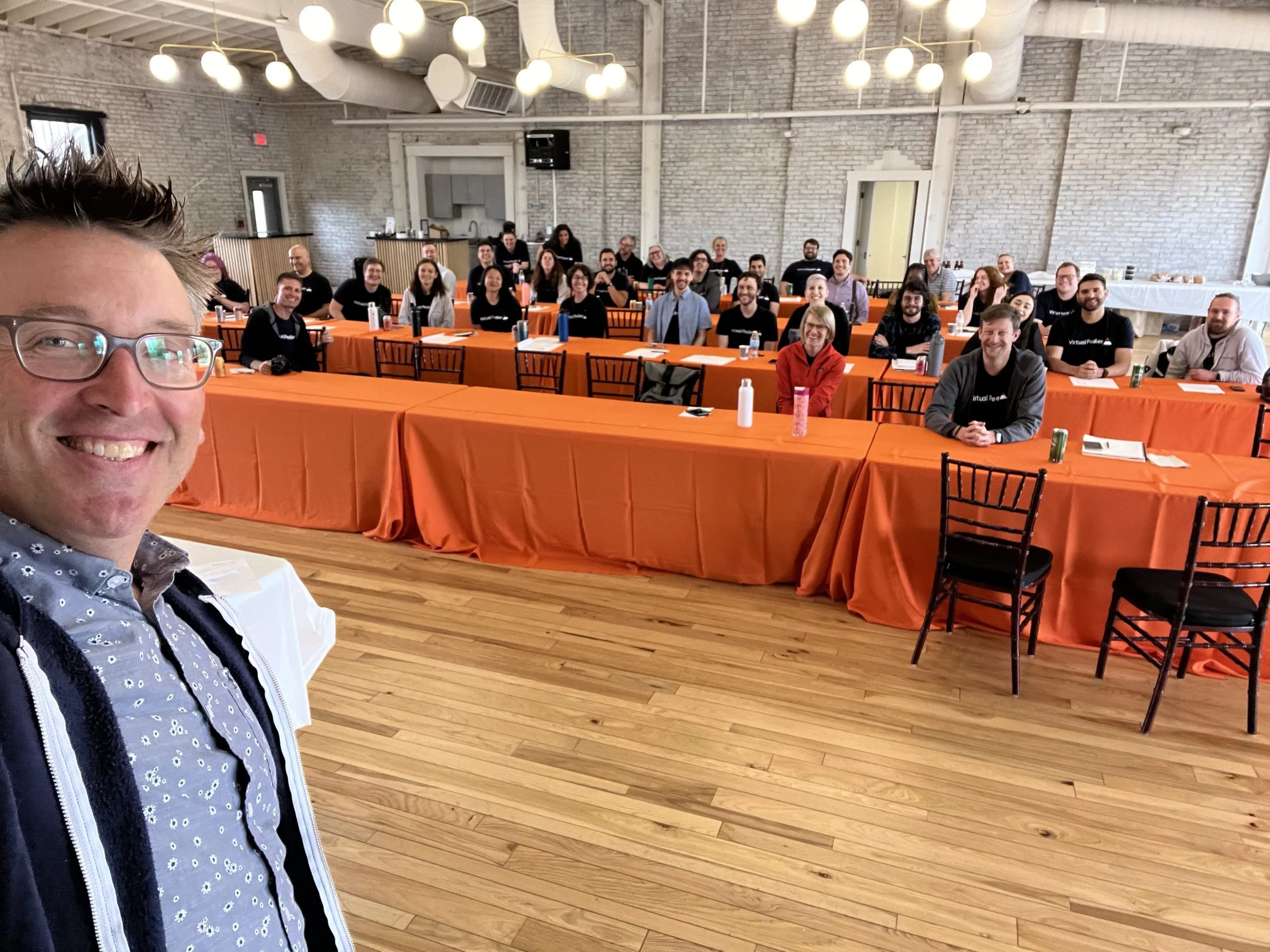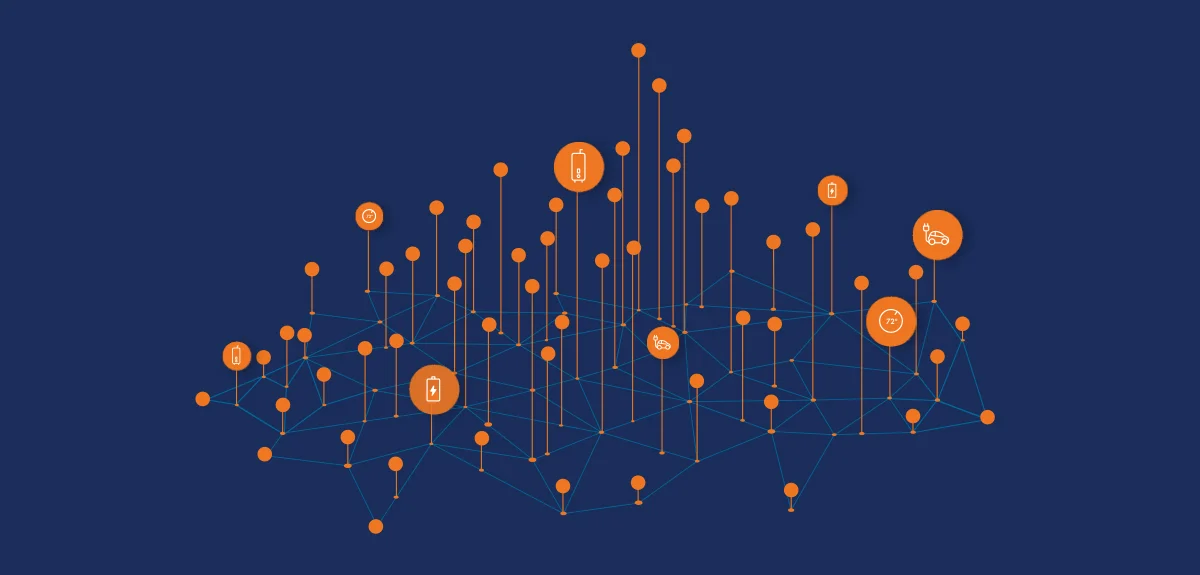Virtual power plants have remained a buzzworthy concept for years, a glimpse into the potential of aggregate demand flexibility. A recent Department of Energy report states that the U.S. currently has between 30-60 GW of virtual power plant capacity deployed at the moment but will need between 80-160 GW by 2030 to keep pace with rising demand during the energy transition. Unfortunately, for many grid operators, renewable energy programs like demand response, EV managed charging, or battery BYOD programs that make up virtual power plants present intermittent and unreliable options for providers that need a reliable and reproducible outcome on demand. Fortunately, Topline Demand Control removes the uncertainty of intermittent distributed energy resources (DERs).
Topline Demand Control is our novel combination of the Shift distributed energy resource management system (DERMS) suite, the Envision load forecasting suite, and model predictive control that allows utilities to specify the aggregate demand that they want to get reliably every time. Topline Demand Control does precisely that by making demand as controllable as a gas turbine generator.
To celebrate the launch of Topline Demand Control, we sat down with our CEO and Founder Dr. William “Bill” Burke to learn the fundamentals of this new solution. Read on to learn how Topline Demand Control can help all utilities operationalize distributed energy.
What is Topline Demand Control?
William Burke: Topline Demand Control totally changes the paradigm by which devices are controlled. Instead of having program managers think about sending set points to devices, they think about what they want the aggregate load shape to look like. We give the utility tools to understand the possibilities of the aggregate load shape and to plan what they want the aggregate load shape to look like, specifying exactly how much load should be dispatched at each point in the planning window. The magic happens when Virtual Peaker, using the Topline Demand Control technology, makes the desired load a reality by constantly optimizing the commands sent to devices to bring about the exact load shape that the utility wanted at every given point in time throughout that event.
This allows utility operators the ability to think about DERs with similar analogies to generators. They have supply blocks that are reliable and controllable. They know when they can use those supply blocks and they can fit them in with the rest of their generation stack. Before Topline Demand Control, that level of operationalization was effectively impossible because DERs were not as observable or controllable as generators.
How Does Topline Demand Control Work?
WB: There are three steps to the process. The first step is situational awareness, which is where we forecast the maximum available capacity into the future. This is challenging because DERs provide different amounts of capacity throughout the day and year. Think about thermostats when everybody gets home from work on a hot summer day and all of the ACs are running to cool down the houses. There is going to be more available capacity than in the cooler morning times when the ACs are not working so hard. Topline Demand Control shows the operators the available capacity for different length events every hour into the future.
The second step is planning. The planning tool marries the situational awareness component with forecasts of the expected demand during the planned event windows. Importantly, operators can specify exactly the demand that they want to have during individual time windows. Whereas with demand response, you’re going to get everything that you can get during the event time frame. With Topline Demand Control you can specify anything at or below the total capacity during that window. And so maybe you don’t need all of it right now and you want to save some for later. You can easily do that with Topline Demand Control.
Finally, it’s the actual execution where the magic happens. Our model predictive controller works in concert with AI and real-time control to seamlessly optimize the commands sent to the devices to make the total demand exactly what the utility wanted.
How Does Topline Demand Control Enable the Next Generation of Virtual Power Plants?
WB: To understand what topline demand control is you have to understand the problem we’re trying to solve. Today there’s this concept of virtual power plants that the DOE and many others are promoting. The idea of a virtual power plant is that utilities can access numerous distributed energy resources, devices like thermostats, water heaters, and batteries, in customers’ homes. Those assets are brought together and then controlled in aggregate by some entity, using a DERMS. Once the pieces are in place, we want to use those DERs to help balance the grid.
The problem is that most DERMS still operate using old technology that controls those assets in the same way that they control a demand response program. Effectively, the utility hits a big button, all the devices get the same set point change, and they all change their operations, resulting in a load shape that’s hard to predict. It’s not a controlled load shape: you basically get what you get. Of course, you can try to predict what it is, but otherwise, you get what you get.
This coarse, inaccurate, and uncertain control doesn’t allow utility operations and power purchasing teams to get behind DERs in a way that will allow them to be fully operationalized and bring about a cleaner grid. They can’t get behind it because they can’t think about virtual power plants in the same way as a generator:
Can Topline Demand Control Increase Reliability in the Control Room?
WB: Utility operators are literally keeping the lights on. They are the ones that make sure that we have reliable power and that means that everything they do has to work, it has to be reliable, it has to be predictable, and today distributed energy resources (DERs) are not those things. They’re not reliable. They’re not particularly predictable. They can’t be counted on the way operators expect them to be counted on and that’s a huge barrier to adoption.
Topline demand control makes the connections between DERs and the operations center in a way that allows operators to really understand what they’re doing and count on it, and then be able to use it to balance the grid.
How does AI inform Topline Demand Control?
WB: Virtual Peaker has built a custom AI operations platform that automatically builds, trains, deploys, and assesses machine learning models based upon the data that we store in our system from things like weather, device operations, or potentially pricing data. We use those models to create the capabilities forecast—that situational awareness component—and the event planning forecasts. The AI is critical to providing effective situational awareness and planning tools.
How Will Topline Demand Control Help With Increasingly Erratic Weather Events?
WB: An important component of our AI operations platform is that we’re constantly bringing in new data, retraining models based on new data, and assessing those models against older models to decide which is better. We’re automatically going to retrain our models and deploy the one that’s the most accurate.
What is Model Predictive Control?
WB: Model predictive control is a control technology that’s been around for at least 10 or 15 years, and it marries what’s called real-time control with optimization.
The way real-time control works in a digital computer is that you’re constantly bringing in new data from your sensors. The sensors in this situation are the water heater temperature, battery power consumption, or mode… that sort of data. The real-time controller then does some math on that and decides what to do with that device. For example, do you want to send the command? Do you want to change the set points? You’re effectively building a model of the system and then you’re watching that model evolve, comparing what you want it to do to what it’s actually doing, and then determining what control signals to send.
With model predictive control, we add an extra layer into the real-time control, an optimization layer. The model predictive control is constantly reoptimizing to ensure the commands we send will bring about the future that the utility is asking for while automatically dealing with any outside influences.
Why is Topline Demand Control Exciting for Both Virtual Peaker & the Industry?
WB: I founded Virtual Peaker in 2015 after years in the industry including my time in academia, writing my dissertation on this topic, working at startups and Fortune 50 companies, all thinking about how to use DERs to deal with the renewable intermittency problem and accelerate the adoption of clean energy. The big idea is that If you can balance the grid using something other than fossil fuels, you can make it easier to adopt more renewable energy.
Virtual power plants are an exciting new concept in the energy space. The idea is, again, that we want to use these zero-carbon assets and devices that customers already own to effectively help bring about the adoption of more renewable generation, to make it easier to bring on more wind and solar. I started Virtual Peaker with a clear vision: “To make demand as controllable as a gas turbine generator.” Today we are realizing this vision.
Are Existing DERMS Technologies Enough to Realize the Promise of VPPs?
WB: Frankly, today’s technologies are inadequate to realize that vision fully. It’s inadequate because the utility operations folks can’t get their heads around it in the same way that they can with generators. The analogies aren’t good enough between virtual power plants and actual power plants. The analogies fall apart. Topline Demand Control is the technology that bridges between virtual power plants and utility operators, which will allow utilities to fully realize the reason why we’ve created virtual power plants: to be utilized in the same way as power plants.
Topline Demand Control is a technology that must be adopted widely in order to realize the potential of DERs and virtual power plants. It’s a challenging technology to develop, especially for cloud-based software platforms, because real-time control from the cloud is HARD! It was an unsolved problem before Virtual Peaker existed, and our patented solution maintains scalability while providing the best performance in the industry.
Next Generation of Virtual Power Plants: Topline Demand Control Conclusion
Already, analysts anticipate that the distributed energy resource (DER) market will double by 2027, providing increased opportunities for utilities to meet demand. By optimizing demand, Topline Demand Control is an effective strategy in deferring the high infrastructure costs needed to modernize the grid and meet rising energy needs. Fortunately, Topline Demand Control will revolutionize demand flexibility strategies while mitigating costs and reliably meeting customer needs every time.





